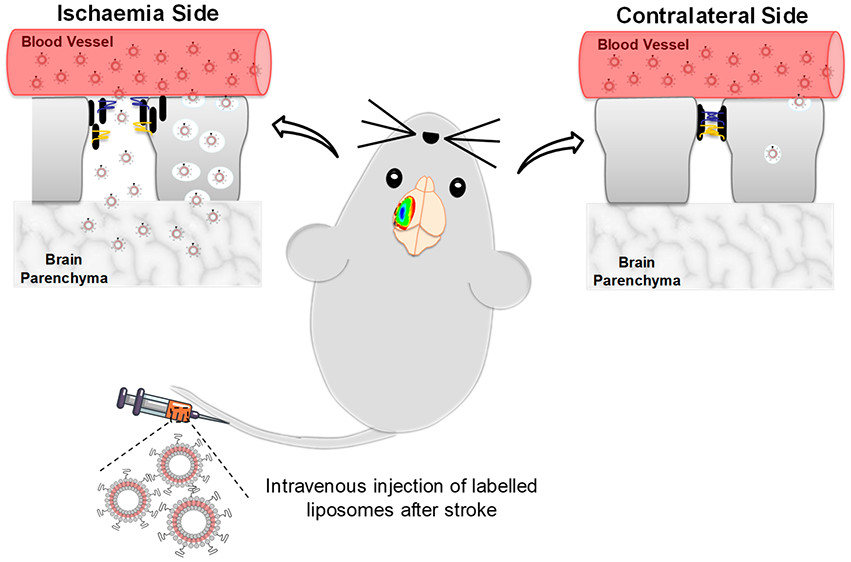
Selective liposomal transport through blood brain barrier disruption in ischemic stroke reveals two distinct therapeutic opportunities
Al-Ahmady, Z.S. et al., 2019. Selective Liposomal Transport through Blood Brain Barrier Disruption in Ischemic Stroke Reveals Two Distinct Therapeutic Opportunities. ACS Nano, 13(11), pp.12470–12486.
The development of effective therapies for stroke continues to face repeated translational failures. Brain endothelial cells form paracellular and transcellular barriers to many blood-borne therapies, and the development of efficient delivery strategies is highly warranted. Here, in a mouse model of stroke, we show selective recruitment of clinically used liposomes into the ischemic brain that correlates with biphasic blood brain barrier (BBB) breakdown. Intravenous administration of liposomes into mice exposed to transient middle cerebral artery occlusion took place at early (0.5 and 4 h) and delayed (24 and 48 h) time points, covering different phases of BBB disruption after stroke. Using a combination of in vivo real-time imaging and histological analysis we show that selective liposomal brain accumulation coincides with biphasic enhancement in transcellular transport followed by a delayed impairment to the paracellular barrier. This process precedes neurological damage in the acute phase and maintains long-term liposomal colocalization within the neurovascular unit, which could have great potential for neuroprotection. Levels of liposomal uptake by glial cells are similarly selectively enhanced in the ischemic region late after experimental stroke (2–3 days), highlighting their potential for blocking delayed inflammatory responses or shifting the polarization of microglia/macrophages toward brain repair. These findings demonstrate the capability of liposomes to maximize selective translocation into the brain after stroke and identify two windows for therapeutic manipulation. This emphasizes the benefits of selective drug delivery for efficient tailoring of stroke treatments.
Read the full article here






0 Comments